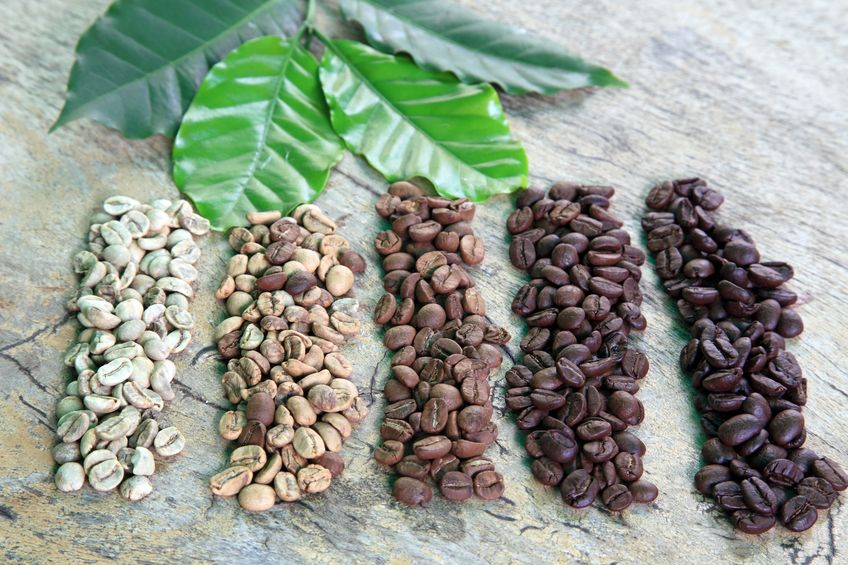Coffee Roasting – knowing your roast levels

Many people grind their beans themselves, to ensure a fresh and flavorful cup of coffee.
But not as many people roast their own. Whether you are a home-roaster or not, knowing the different roast levels and their taste characteristics can be helpful when purchasing coffee.
What exactly does roasting do? The sugars, fats and starches that are within the bean are emulsified, caramelized and released. This creates the delicate coffee oil. This oil is what gives coffee its distinctive aroma and taste.
In general, lighter roasts are sharper and more acidic than the darker roasts. Darker roasts have a fuller flavor. Beans that have been over-roasted will take on a burned, smoky or charcoal flavor. Also, there is less caffeine in the darker roasted coffees than in the lighter ones. The roast alone doesn’t determine the resulting coffee taste or quality.
The origin of the beans makes a big difference. A bean from Ethiopia will taste differently than a bean from India, even if they are both French roast.
American, Light
Medium light brown beans. This roast is the norm for eastern USA. This roast (and sometimes cinnamon as well) is the most often used for cupping or professional tasting.
City, Medium
The color is darker still, more of a medium brown (think chocolate). This roast is common in the western parts of the USA. This roast is a good choice to taste the differences between varietals.
Full City
Medium dark brown beans. The beans will start to show some oily drops on the surface with this roast. Full City will have caramel or chocolate undertones.
French, Espresso
Beans are starting to get dark brown, and French roasted beans are shiny with oil. There is less acidity, but with burned undertones. This roast is often used when making Espresso. Many people think this is the darkest roast available, but that’s not true.
Italian, Dark French
Similar to regular French, but more so. Darker and oilier looking, and with a stronger burned flavor.
Source: Tea and Coffee magazine